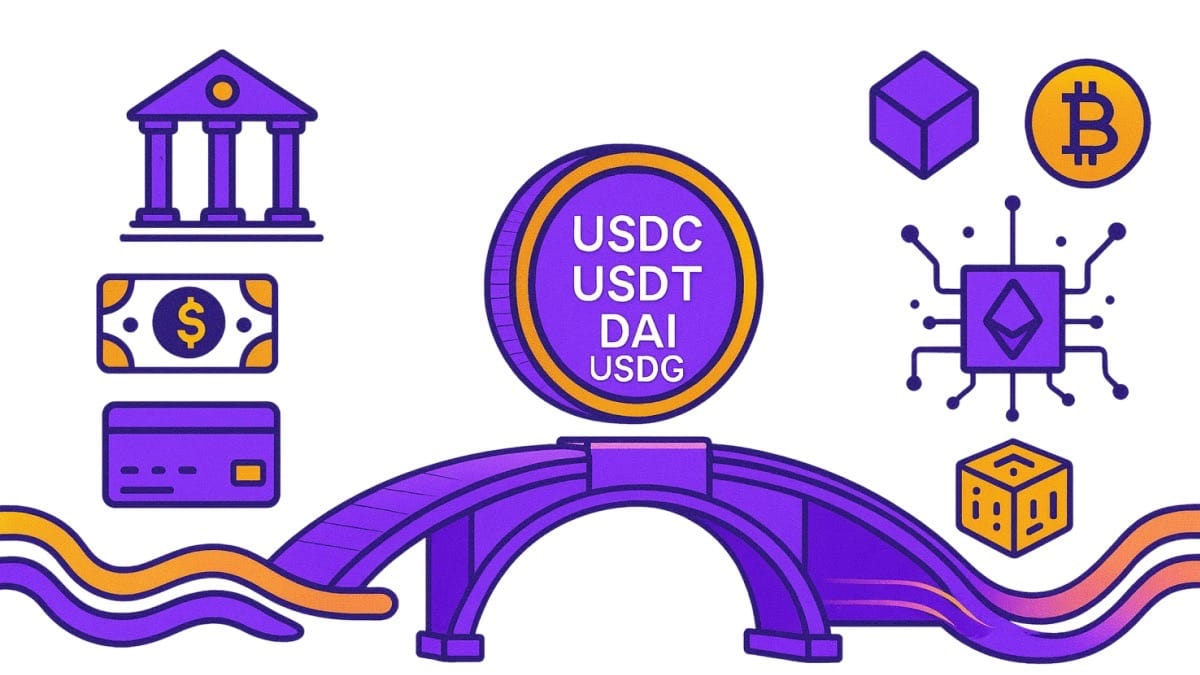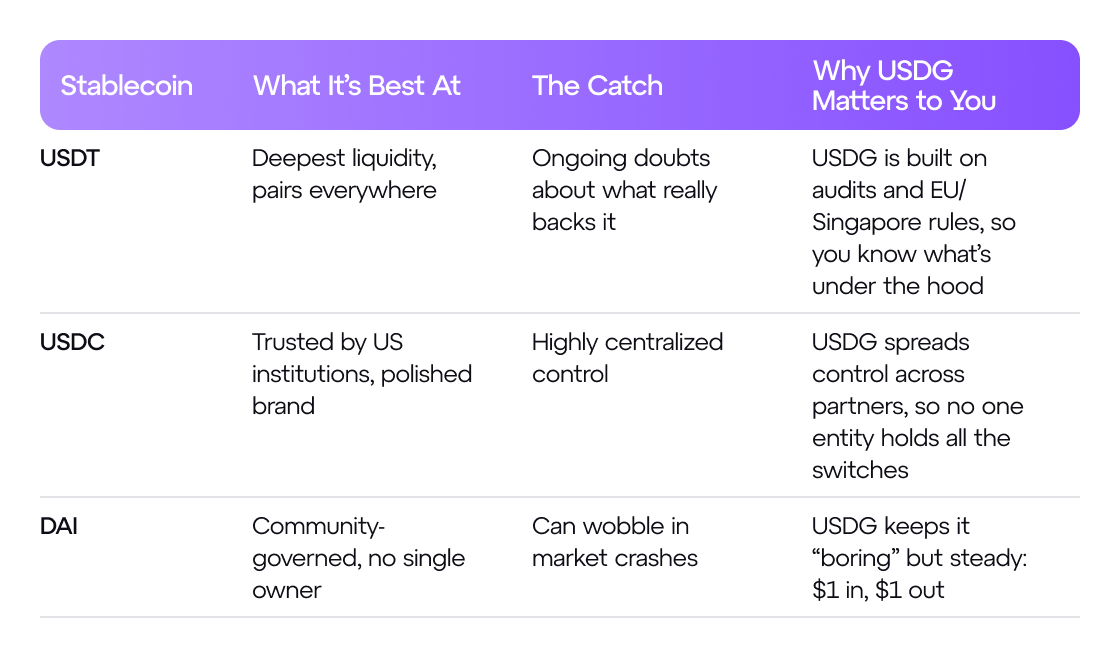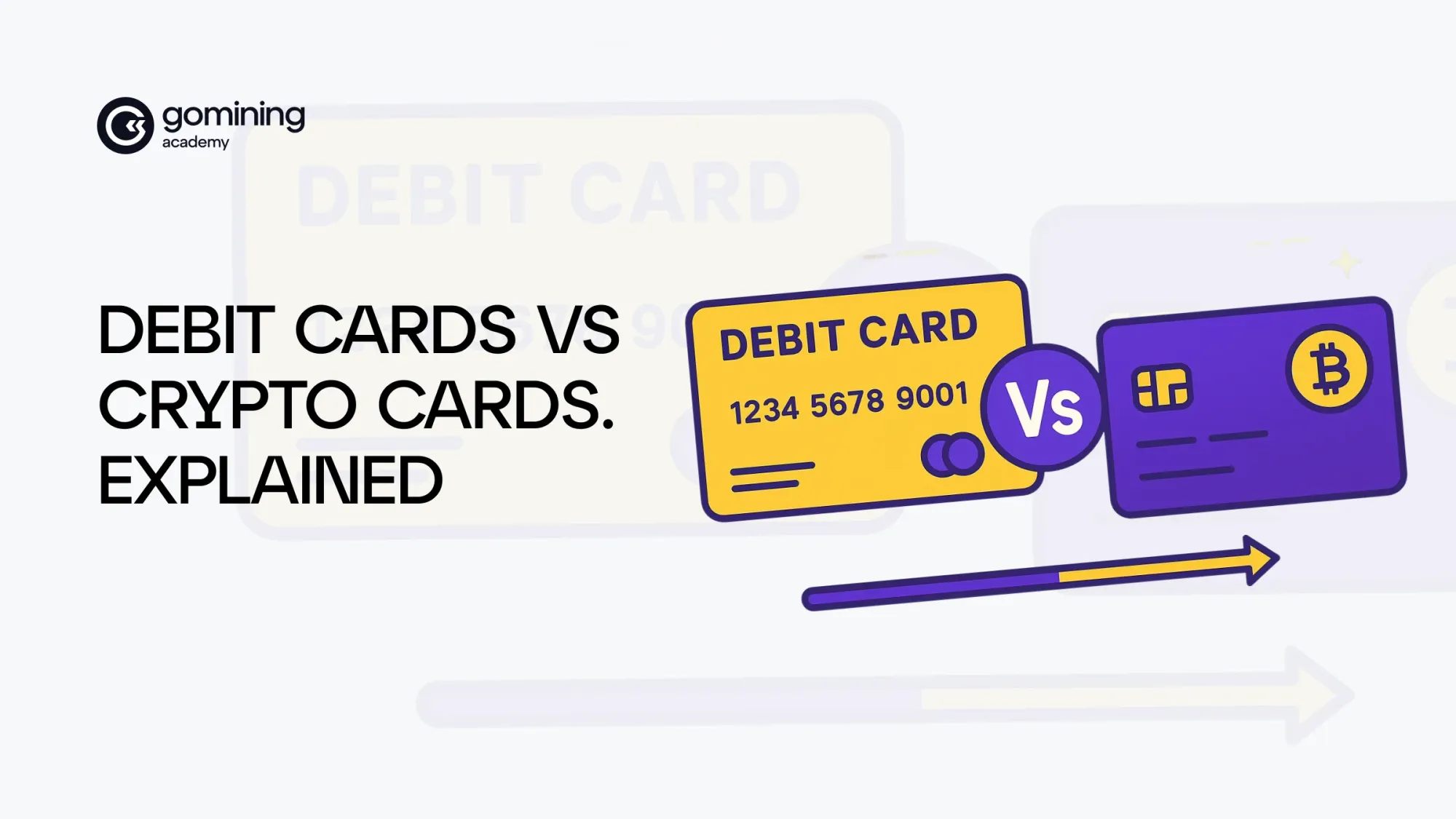What Is USDG?

Your first thought might be: “Great, another crypto acronym. Do I really need to know this one?”
It’s a fair reaction. The crypto space is crowded, and most names blur together.
But stablecoins…Hang on, you’ll find the explanation in a bit — keep showing up for a reason.
Maybe you’ve felt it: an international transfer that stalls over a weekend, a remittance eaten up by fees, a local currency that buys less each week. That’s where stablecoins come in.
USDG attempts to make stablecoins work in the boring, everyday moments that matter. Over the next sections, we’ll unpack how it works, what’s different about it, and the trade-offs that come with those choices.
Table of Content:
- What Is USDG? And Why Stablecoins Exist in the First Place
- How Does USDG Work? Keeping a Digital Dollar Truly Stable
- Benefits of Using USDG Why People Might Care Beyond Traders
- Use Cases of USDG in the Crypto Ecosystem
- Risks and Challenges of USDG
- Comparison: USDG vs Other Stablecoins
- Future of USDG and Stablecoins
- Conclusion: Where USDG Fits in the Bigger Stablecoin Puzzle?
What Is USDG? And Why Stablecoins Exist in The First Place
USDG is a stablecoin — but before diving into it, let’s pause on the word itself.
Why Stablecoins Exist?
If Bitcoin can swing 10% in a day, how do you use it to buy groceries or send money home without the value changing by the time it arrives? That’s where stablecoins came in: crypto’s answer to volatility.
They were built to calm the ride: digital assets tied to something steady (most often the U.S. dollar, but also euros, gold, or baskets of assets) so you can send, store, or use value online without the price changing mid-transfer.

Most act like a bridge. On one side: the traditional world of bank deposits and government money. On the other: crypto networks that move value instantly, without borders or bank hours. A stablecoin stands in the middle, carrying the trust of one world and the speed of the other.
Not all models work equally, but the aim is the same: make digital money that feels as predictable as cash in your pocket.
Where USDG Fits
USDG is a dollar-pegged stablecoin. Meaning that 1 USDG aims to equal 1 U.S. dollar. It’s issued by Paxos Digital Singapore, a regulated arm of Paxos under the Monetary Authority of Singapore (MAS) — one of the strict regulators worldwide. The issuer’s job is to create new USDG only when matching dollars arrive, redeem it when people cash out, and publish independent reports so the totals match. For instance, if you deposit $100, the issuer creates 100 USDG. When you cash those tokens out, the same $100 goes back to you.
USDG also powers the Global Dollar Network — exchanges, wallets, and payment firms integrating this stable dollar into their systems. In practice this means easier on-ramp: services that let you turn fiat money (like dollars or euros in your bank account) into digital assets safely.
For businesses and developers it means few steps to get started. For institutions, it’s a digital dollar they can use without stepping outside regulated rails.
By mid-2025, USDG launched under Europe’s MiCA framework (a single playbook that replaced dozens of national rules) alongside MAS oversight. That combination gave it from day one clearer reserves, stronger supervision, and fewer chances of sudden collapse.
How Does USDG Work? (Keeping A Digital Dollar Truly Stable)
After the “what,” it helps to see the “how” USDG aims to behave like a dollar that can move online at any time. Three parts make that possible: the peg, the mint-and-redeem flow, and the networks it runs on.
Pegging Mechanism: The 1:1 Dollar Promise
But what in the world is a peg? It’s crypto jargon for a rule of value: one USDG should always equal one U.S. dollar. Hold 10 USDG, and you should be able to treat it as ten dollars — no matter how crazy the market gets.
That promise only works if real assets sit behind it. USDG is backed by cash and short-term government bonds held in custody. Independent reports show the totals so people can see that every token has something real on the other side. Without that backing, “one USDG = one dollar” would be just a slogan.
Minting and Redemption: Where USDG Comes From And Goes
But peg holds only if the tokens flow in and out works as designed:
- “Minting” happens when new USDG is created, but only after matching dollars come in.
- “Redemption” is the opposite: turning USDG back into cash at one-to-one.
Technology Infrastructure
USDG started on Ethereum, the most widely used blockchain for building applications and moving digital assets. It later expanded to other blockchains like Solana and Ink. The chain you use is no joke, it changes cost and speed: a $100 transfer on Ethereum may take minutes and cost a few dollars in network fees; on Solana it’s usually seconds and cents. Multi-chain support means you can pick what works for you instead of being trapped in one ecosystem.
When the peg, the mint-and-redeem flow, and the network all pull in the same direction, a “digital dollar” stops being an idea and starts feeling useful.
Benefits of Using USDG: Why People Might Care Beyond Traders
Stablecoins aren’t just for traders staring at charts. They start to matter in the everyday frictions where money feels slow, expensive, or unreliable. Here’s where USDG shows up in real life:
- Price stability in a volatile space: USDG is built to stay near one dollar. That steadiness means sending $50 doesn’t feel like gambling on whether $40 or $60 by the time it lands. This lets people treat it like cash online, not a lottery ticket.
- Faster, cheaper cross-border payments and everyday speed: Sending 500 dollars abroad via banks still eats up about 4.26% on average (World Bank, Q1 2025). Families that depend on remittances feel that loss every month. With USDG, transfers settle in minutes and usually cost cents. That’s food on the table, instead of money lost. It’s not just remittances. Payrolls don’t stall over weekends. A USDG transfer doesn’t need working hours, giving businesses smoother cash flow and workers fewer anxious waits.
- Financial access for the unbanked: Around 1.3 billion adults live outside the banking system. USDG asks for a smartphone and the internet connection. That means someone in a place with shaky banks or runaway inflation, has a way to store value in dollars and move money globally without gatekeepers.
- Plugging into DeFi: as part of the Ethereum ecosystem, USDG also works in decentralized finance (DeFi): open apps where people save, borrow, or swap value without a bank in the middle. A steady digital dollar is the anchor there — something solid to hold while testing new tools.
Together, these benefits explain why stablecoins keep spreading. They make digital money behave more like real money. USDG’s bet is that doing it with regulation and transparency makes it the one you can actually count on.
Use Cases of USDG in The Crypto Ecosystem
Stablecoins only matter if they’re actually used. USDG is young — launched in late 2024 — but it’s already showing up in places that hint at its role.
On trading platforms
Exchanges like Robinhood in the U.S. and OKX globally are testing USDG as a settlement layer. For them it’s about clearing millions of trades without bank delays that can freeze markets. Robinhood’s near-collapse during the 2021 meme-stock frenzy showed what happens when settlement lags: trading halts and chaos. A regulated dollar that settles fast lowers that risk.
For them, it’s about clearing millions of trades without bank delays that can freeze markets. Robinhood’s near-collapse during the 2021 meme-stock frenzy showed what happens when settlement lags: trading halts and chaos.
In cross-border payments
Some payment providers are piloting USDG to cut costs for global transfers. When networks like Mastercard join the same ecosystem, and you start to see stablecoins sliding into everyday payment rails instead of staying locked inside crypto apps.
In NFT and Web3 platforms
NFT marketplaces and games often suffer from unpredictable pricing: a $50 in-game item shouldn’t suddenly cost $75 because the payment token fell overnight. Using USDG keeps prices steady, so creators know what they’ll earn and players know what they’ll pay. Its regulated backing also reassures newcomers who prefer stability over volatile tokens.
USDG’s use cases are still early, but each one points in the same direction: embedding a regulated digital dollar into systems that need both speed and trust.
Risks and Challenges of USDG
Stablecoins are built for stability, but none are risk-free. If you’re hearing about USDG for the first time, the doubts you might have are the same ones that pop up across the whole stablecoin market:
“What if regulators ban it?”
Crypto has lived through sudden bans before. USDG tries to avoid that fate by launching under the strict Singapore’s Monetary Authority (MAS) and the EU’s MiCA framework. In plain words, it was built to live inside rules, not outside them. That doesn’t make USDG untouchable — rules can shift — but it starts from a stronger regulated footing than most.
“How do I know the reserves are real?”
Stablecoins rise or fall on reserves. USDG posts independent monthly reports and keeps assets in custody with regulated banks. By contrast, some other stablecoins have faced criticism from regulators for unclear or delayed disclosures. USDC tries to flip that by keeping numbers public.
“Isn’t this too centralized?”
Yes. Like USDT and USDC, it’s issued by a company, not a community vote. The difference is that Global Dollar spreads economics across a partner network instead of one entity holding every decision. This doesn’t erase centralization risk, but it helps spread it out instead of leaving all control in one place.
“Could there be a bank run?”
It’s possible in any pegged system. And it happens when people lose faith in a peg. Even “safe”models have cracked under stress before. USDG leans on audited reserves and bank-grade custody to lower the odds, but no stablecoin is immune. The bet is that solid foundations make panic less likely and recovery faster.
“Why not stick with USDT or USDC?”
USDT wins on liquidity. USDC leans on U.S. ties. USDG is newer, with smaller market size and fewer integrations today. Its lane is regulation-first, which might appeal to institutions over time.
So yes, the classic stablecoin worries apply here too. USDG’s answer is transparency and regulation.The open question is whether that will be enough when the next stress test comes.
Comparison: USDG vs Other Stablecoins
Not all stablecoins play the same role. The three names you’ll hear most are USDT, USDC, and DAI. Setting them side by side helps show where USDG fits.
USDT: Reach vs. Clarity
USDT (Tether) is everywhere, dominating in trading volume and pairs. Its weakness is transparency. Questions about reserves have followed it for years. USDG takes the opposite lane: smaller today, but regulated from launch with regular public reports. If your worry is, “I just want to know what’s under the hood,” this is where USDG leans hardest.
USDC: Reputation vs. Concentration
USDC is the “institution-ready” option, with steady audits and strong U.S. ties. Still, centralization is the weak point: one company, Circle, holds the control points. USDG isn’t decentralized either, but its network model spreads control more widely.
DAI: Decentralization vs. Market Stress
DAI runs on community control instead of a single company. The rules are set by people who hold DAI’s governance tokens, which work like voting shares. That gives the system a democratic feel, but it also means decisions can take time and depend on how engaged the community is.
Its model uses “over-collateralization,” meaning users lock up more value (in crypto assets) than the amount of DAI they create. When markets are calm, it looks elegant. But when prices crash, that collateral can lose value fast and strain the peg.
USDG takes a different path: plain fiat reserves in a bank, with a one-to-one dollar promise. It’s a simpler design that trades community control for predictability.
Quick snapshot of how they stack up:

It’s clear that USDG is not trying to unseat the giants overnight — it’s making a bet that the stablecoin that survives the next stress test will be the one built to satisfy regulators as well as users.
Future of USDG and Stablecoins
Will you actually use USDG in five years? Will it pay your bills, cover your payroll, or move your money across borders as easily as cash? That’s the future USDG has to prove.
Expansion Plans for the Global Dollar Ecosystem
The Global Dollar Network passed 25 members in its first six months, linking wallets, exchanges, and payment firms that together reach tens of millions of users. The roadmap points toward Asia, Europe, and the Middle East, with payments and settlements at the center. Early numbers look big, but size isn’t the same as staying power. It is too soon to know if USDG will become part of people’s routines by 2030, or fade into the background like dozens of others before it.
Regulation and Institutional Role
USDG is one of the most regulated stablecoins yet. That’s an edge now, but rules evolve, and what looks compliant today may need rewriting tomorrow. For large institutions, the draw is risk management. Regulator’s credentials give USDG credibility where USDT still faces doubts. But the bigger issue might be fragmentation. With so many stablecoins chasing the same role, will institutions narrow down to a few giants, or keep the door open for fresh entries like USDG?
Adoption Beyond Crypto
The next frontier is whether stablecoins can move from trading charts to real-world routines like payroll, remittances, and online shopping. USDG’s angle is that being the “compliance-first” option gives it the best shot at crossing that line.If that works, its advantage won’t be speed or size. It will be the kind of trust that scales.
Conclusion: Where USDG Fits In The Bigger Stablecoin Puzzle?
After the how, the why, the risks, and the comparisons, USDG’s claim is simple: stable money only goes mainstream if it starts with trust, regulation, and integrations people already use.
Right now, it’s still early. Some dismiss it as another logo, others frame it as the first real test of the regulatory era. The verdict isn’t in.
👉 Five years from now, USDG could be:
- a footnote in a crowded list of stablecoins
or
- the case study that proved regulated digital dollars can go mainstream.
Which way it goes depends less on marketing promises and more on whether trust, compliance, and usefulness actually line up when people need them most.
Stablecoins are racing to build the rails of digital money. USDG wants to be the one that regulators accept and users trust. The test has already begun.
Your Next Step
Stablecoins like USDG show both the promise and the puzzles of digital money. The details matter — pegs, reserves, regulation — and missing them can mean missing the point.
That’s why GoMining Academy exists: to cut through the noise and explain crypto in plain words, with guides you can actually use when the market shifts.
👉 Start with GoMining Academy, so the next time someone throws a new ticker your way, you’ll know whether it’s worth your trust.


